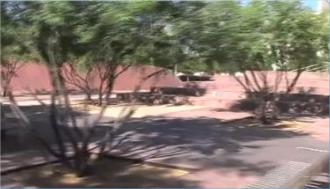Conclusion
By undertaking the foundational work to articulate their mission to diverse audiences, WPAs can construct much more favorable rhetorical situations for further communication, deliberation, and other rhetorical acts. Because writing instruction (much more noticeably than, for example, quantum physics) is a discipline that most audiences believe they know something about, articulating the work of programs can, at times, seem like an impossible and unending task. In this context, it is all too easy for WPAs to find themselves constantly reacting to particular arguments within rhetorical situations largely controlled by others.
The integration of digital video into already existing program practices, we have argued, can open up possibilities for innovative strategies that can work toward changing the basic rhetorical situation. Although digital video can require substantive up-front work in production, once created, it can be shown to multiple audiences in multiple venues, and can ultimaltely serve as a programmatic archive. Furthermore, because of the digital format, timely revisions can be made readily. When incorporated within the standard operational practices of a writing program, as in the University of Arizona Writing Program's orientation example, even secondary audiences are effectively drawn into video articulations. They recognize that these representations are widely shared and serve as a new commonplace for further argumentation.
Digital video's persuasive power is enhanced additionally by its ability to create an emotional response in the viewer, an effect it shares with other forms of visual rhetoric. By making the work of writing programs visible, digital video can help make programs valuable on their own terms. Through representing subjects engaged in virtual dialogue, digital video also provides possible points for identification, inviting members of the audience to participate within writing programs in ways that further support the work of the program.
In this way, video representations can exceed their original function of representing the program to others by actually working to constitute, or at least maintain, the program itself, as shown in the Southern Arizona Writing Project video's use of carefully selected material to articulate its purposes to a broad and diverse constituency. Although the strategic use of digital video cannot in itself fully change the conditions WPAs face, it can powerfully articulate the work of writing programs in ways that can engage multiple audiences in more positive, supportive discussions about writing and writing instruction.
